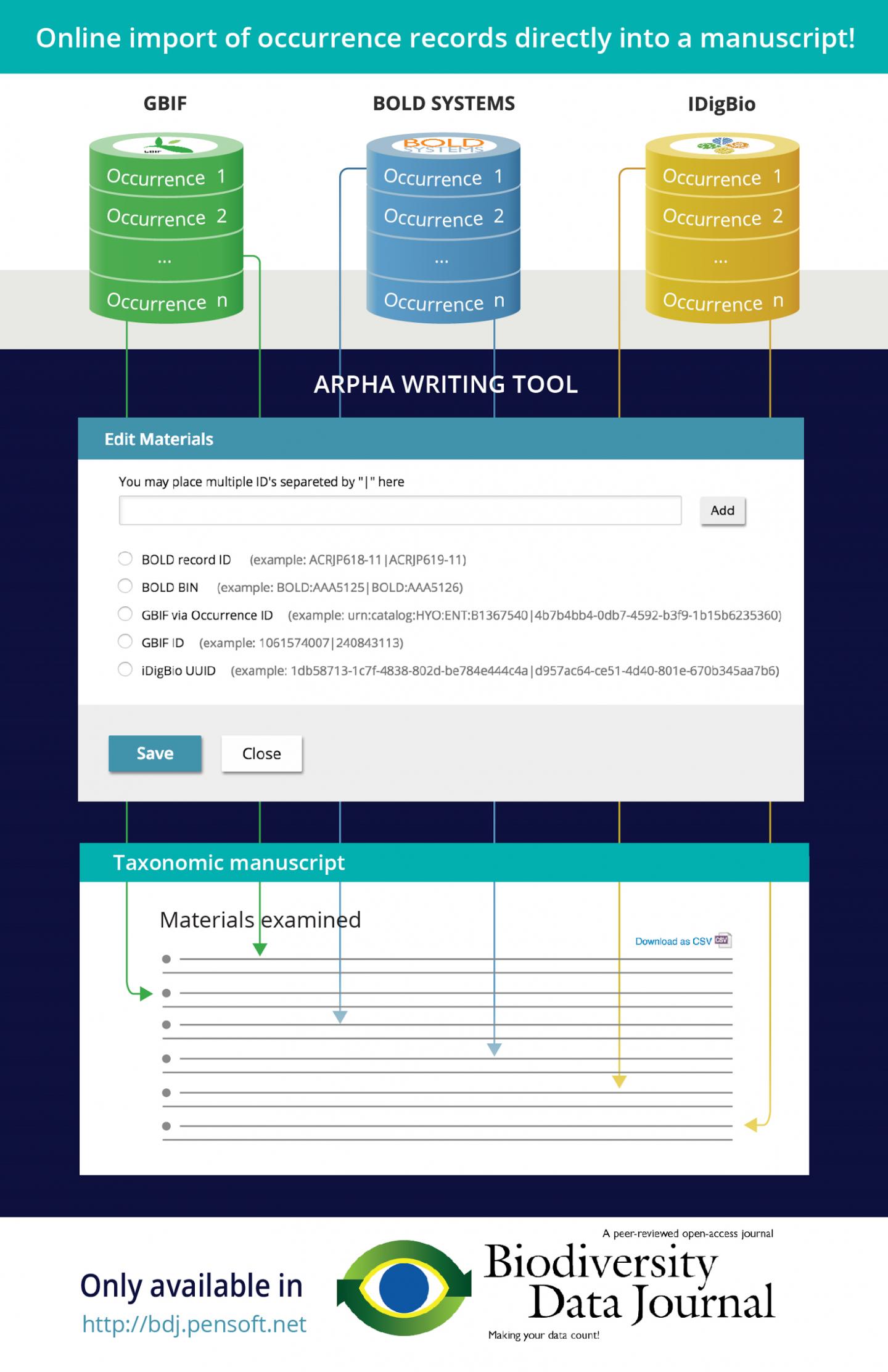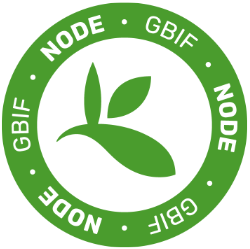
This image shows the workflow for directly importing occurrence records into a taxonomic manuscript. Image courtesy of Pensoft.
Substantial amount of documented occurrence records is awaiting publication stored in repositories and data indexing platforms, such as the Global Biodiversity Information Facility (GBIF), Barcode of Life Data Systems (BOLD Systems), or Integrated Digitized Biocollections (iDigBio). In order to streamline the authoring process, save taxonomists time, and provide a workflow for peer-review and quality checks, Pensoft has introduced an innovative feature that makes it possible to easily import occurrence records into a taxonomic manuscript.
Prior to this development, Pensoft's ARPHA Writing Tool (AWT) only used the "upload from Excel" approach for this workflow. Although this method significantly simplified the process of importing materials and is actively used by the authors, it still required one extra transposition step.
Now, we added a new even more user-friendly option. By simply specifying an identifier (ID) in the relevant box, the new import plugin allows for occurrence data, stored at GBIF, BOLD systems, or iDigBio, to be be directly inserted into the manuscript. It all happens in the user-friendly environment of the AWT, where the imported data can be then edited before submission to the Biodiversity Data Journal.
Not having to retype or copy/paste species occurrence records, the authors save a lot of efforts. Moreover, they automatically import them in a structured Darwin Core format, which can be easily downloaded from the article text into structured data by anyone who needs the data for reuse after publication.
Another important aspect of the workflow is that it will serve as a platform for peer-review, publication and curation of raw data that is of unpublished individual data records coming from collections or observations stored at GBIF, BOLD and iDigBio.
"In a sense, the workflow will serve as a "cleaning filter" for portions of data that are passed through peer-review and are officially published. Thereafter, the published records can be confidently re-used for various purposes," comments Prof. Lyubomir Penev, Managing Director of Pensoft.
“This workflow has the potential to be a huge step forward in documenting use of collections data and enabling iDigBio and other aggregators to report that information back to the institutions providing the data." Larry Page, Director of iDigBio.
The original press release can be found here.







